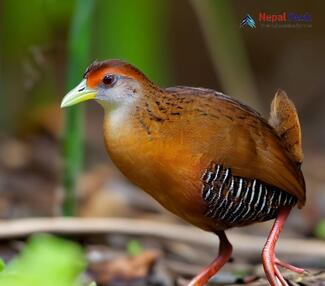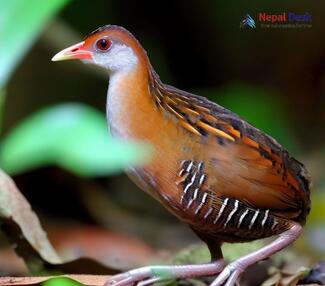For avid birdwatchers or simply those who appreciate the diverse beauty of our feathered friends, the Ruddy-breasted Crake (Zapornia fusca) is a species that stands out due to its distinctive appearance and interesting behavior. This elusive bird can be found in various parts of Asia, including Nepal. In this article, we will delve into the taxonomy, physical features, habitat, diet, presence in Nepal, and an interesting point about the Ruddy-breasted Crake.
Taxonomy and Physical Features
The Ruddy-breasted Crake belongs to the family Rallidae and the genus Zapornia. It falls under the order Gruiformes – a grown of ground-living birds that include cranes and rails. The scientific name for this species is Zapornia fusca, which highlights its characteristic ruddy breast coloration.
The Ruddy-breasted Crake is a small, stocky bird that measures around 19 to 23 centimeters in length. It exhibits sexual dimorphism with males having slightly brighter plumage than females. The adult bird boasts a distinctive rufous-orange breast and belly, which contrasts sharply with its black-and-white barred flanks and back. The head and neck are dark gray with a white streak above each eye, extending from the bill to the nape.
Habitat and Diet
These secretive birds prefer damp habitats such as marshes, wet meadows, flooded fields, and woodland swamps. They have a fascination for thick vegetation where they can skulk around, often remaining hidden from view – making them difficult to spot even for seasoned bird enthusiasts.
Ruddy-breasted Crakes have an omnivorous diet that consists mainly of insects, spiders, snails, and other small invertebrates they find while foraging through dense vegetation. They also consume seeds, grasses, and aquatic plants to supplement their diet.
Presence in Nepal
The Ruddy-breasted Crake has a wide distribution throughout Asia, including Nepal. In this country, it is primarily found in the lowland regions of Terai and the subtropical broad-leaved hill forests. The best time to spot these elusive birds in Nepal is during their peak breeding season, which lasts from April to September.
Interesting Point:
Despite being difficult to observe due to their secretive nature, Ruddy-breasted Crakes have a loud and distinctive call that can help locate them. Their vocalizations are a series of descending whistles, which are often heard just before dawn and again at dusk. These vocalizations play an essential role in helping the birds maintain contact with flock members and attract potential mates.
In conclusion, the Ruddy-breasted Crake (Zapornia fusca) is a fascinating bird species with unique physical features and intriguing secretive behavior. Their presence in Nepal adds to the rich biodiversity of the region while providing an exciting challenge for birdwatchers yearning for a glimpse of this elusive creature.




